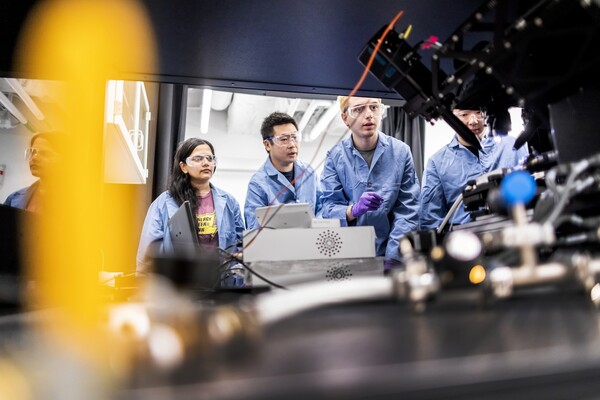
Image: Kindamorphic via Getty Images
Biosensors—electronic devices that can detect the presence of proteins and other biological molecules—have a wide variety of applications, from medical diagnostics and food safety, to security and law enforcement. But current biosensors need to be custom-built to detect a specific target.
A team of Penn engineers, led by Ertugrul Cubukcu, an assistant professor in the School of Engineering and Applied Science, has devised a new kind of graphene-based biosensor that works in three ways at once. Because proteins trigger three different types of signals, the sensor can triangulate this information to produce more sensitive and accurate results.
Not only does this technique provide better data on the quantity of a given protein in a sample, the technique could eventually be used to make a single biosensor that could detect and differentiate a wide range of proteins.
“In a typical single mode biosensor, you have two proteins that interact strongly. You attach protein A to your sensor and, when protein B binds to it, the sensor transduces that binding into some sort of electrical signal,” Cubukcu says. “But it’s kind of a dumb sensor in that it can only tell you if that kind of binding has occurred.
“But let’s say you have proteins A, B, C, and D, all with different physical properties, like charge and mass,” he continues. “If you had a sensor that was sensitive to several of those properties, you could tell the difference between those binding events without starting with corresponding proteins for all of them.”
The more sensing modes operating at once, the better a sensor is at distinguishing between similar proteins. Proteins A and B might have the same mass but different charges, while proteins B and C have the same charges but different optical properties.
The team’s sensors consist of a base of silicon nitride, coated with a layer of graphene, a single-atom-thick lattice of carbon atoms. Being carbon-based means that graphene is an attractive bonding surface for proteins, which means that the device doesn’t need to be “functionalized” with proteins that are apt to interact with the ones the sensor aims to detect.
Graphene’s extreme thinness and unique electrical properties also allow for the mechanical, electrical, and optical modes to operate simultaneously without interfering with one another.
In the sensor’s mechanical mode, the vibrations in the graphene are used to infer the binding proteins’ mass. Their binding also changes the graphene’s conductivity and refractive index, which are used in the electrical and optical modes.
In their study, the researchers tested their sensor with known samples of proteins in order to demonstrate that all three modes can work simultaneously. Further work from the group will investigate the feasibility of using this multimodal sensor to identify proteins from unknown samples.
Evan Lerner

Image: Kindamorphic via Getty Images

nocred

nocred

(From left) Kevin B. Mahoney, chief executive officer of the University of Pennsylvania Health System; Penn President J. Larry Jameson; Jonathan A. Epstein, dean of the Perelman School of Medicine (PSOM); and E. Michael Ostap, senior vice dean and chief scientific officer at PSOM, at the ribbon cutting at 3600 Civic Center Boulevard.
nocred